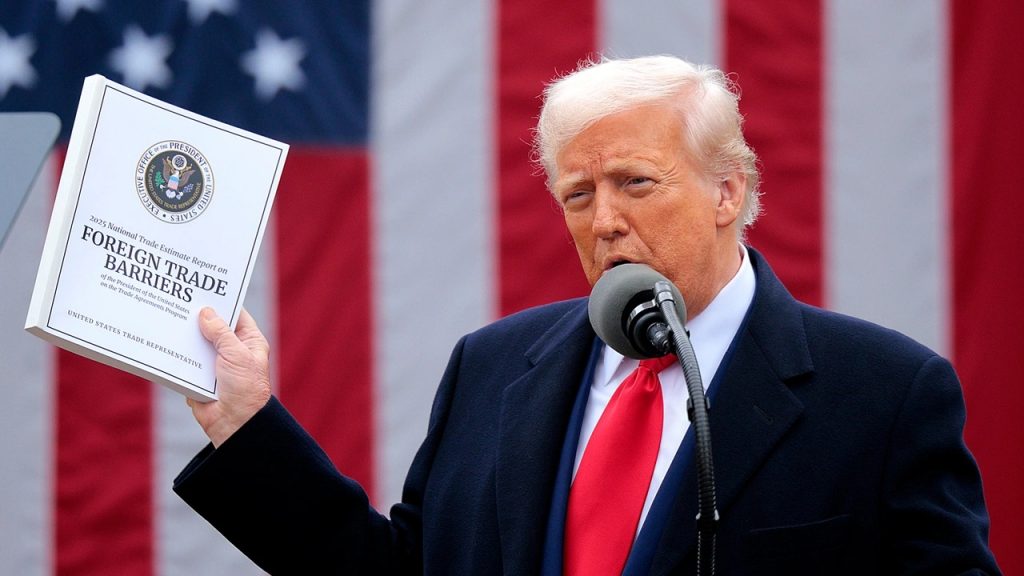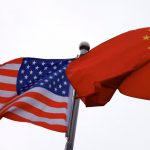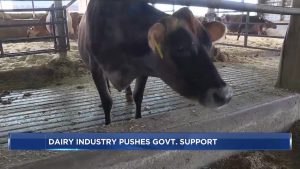
Some farmers see short-term pain from Trump’s tariffs as necessary for long-term gains, while others worry about shifting demand and economic strain.
President Donald Trump’s so-called “Liberation Day” has come and gone, and opinions about the administration’s sweeping tariffs range the gamut. Some farmers say the economic pain is worthwhile. Others don’t feel so liberated.
Chase Goldinger, a 280-acre corn and soybean farmer in northeastern Missouri, describes tariffs as “a game of chicken with other countries to see who will cave first.” He’s worried the tariffs will shift demand away from U.S. farmers.
“China will look south for soybeans, as the recent drop in soybean price suggests. Corn has a decent domestic market with ethanol, feed and food uses. The good that the tariffs might do is yet to be seen,” Goldinger says.
If history is a barometer, farmers will need to batten down the hatches in the coming months. USDA estimates farmers lost $27 billion in exports during the 2018-19 trade war with China, and family farm bankruptcies increased by around 100 from 2018 to 2019, according to data from the American Farm Bureau. Federal funding, which somewhat offset the economic fallout from the previous trade war, is a wild card this time around.
It’s not yet clear how the administration will assist farmers. USDA Secretary Brooke Rollins estimated it will take six months to understand the impact of Trump’s tariffs.
“We have to survive the short term to see the possible long-term gains from said tariffs,” Goldinger says. “They could put a major strain on farmers who bought land after the good years of 2021 and 2022.”
Not everyone has a negative outlook. John Ferguson, an Illinois corn, soybean and wheat farmer, says balancing trade deficits should be a priority for both Republicans and Democrats.
“We are losing $250 [billion] to $400 billion a year in trade to [China]. The least they could do is buy our commodities,” he says. “If we even trade with them, and they bought another $250 [billion] to $400 billion a year from farmers’ commodities, could you imagine the impact on rural areas?”
Beyond trade deficits, Ferguson says cash generated by tariffs could be reinvested into local, state and federal economies.

SIMILAR HOPES: National Corn Growers Association President Kenneth Hartman Jr. (left) and American Soybean Association President Caleb Ragland both hope the tariffs will remove barriers and increase market access for U.S. farmers.
Across the board, farm advocacy groups have called for a quick resolution. Kenneth Hartman Jr., president of the National Corn Growers Association and an Illinois farmer, estimates that 15% of the U.S. corn crop is exported annually. The United States accounted for 37% of global soybean exports in 2023.
Trump’s tariffs play is a big risk for agriculture, especially given the “troubling economic landscape” that he says American corn farmers already face.
“We encourage productive negotiations and have supplied the administration with ideas for removing barriers to U.S. corn, ethanol and other corn products as a path to help rectify trade imbalances and help corn growers be more competitive,” Hartman says. “Brazil, for example, could eliminate the 18% tariffs it puts on imports of ethanol, which is a particularly egregious practice and one that we are pleased to see the president address. The country [of Brazil] should move to quickly come to the negotiating table so that it can rectify this situation.”
The American Soybean Association has taken a similar stance: “We are hoping that from obstacles can come opportunity, and that the administration will swiftly work with the affected countries to create new market access opportunities for U.S. soy and other U.S. products in these markets so these higher tariffs can be removed,” says ASA President Caleb Ragland, a Kentucky soybean farmer.
Long-term impact
Perspectives might vary, but everyone agrees tariffs hold protracted implications — either bad or good. Grayson Fridgen, who grew up on a Kentucky farm, is hoping the tariffs will have a positive generational impact. Short-term hardship might detrimentally affect agriculture for now, he says, but the long-term alternative is worse.
“Something has to change. There is growing debt that is out of control,” Fridgen says. “Who will it affect? Me and my entire generation, and the generations to come.
“There comes a point where you just have to make a change. It will get better in the long term. Any economist would disagree because they are only interested in the short-term dollar.”
Amid uncertainty, one thing is for sure: Tensions are ratcheting up. Countries around the world are crafting retaliatory trade actions. The European Commission said that while it prefers negotiations, it’s ready to respond in kind. So is Canada and Mexico. China’s Commerce Ministry vowed to “fight to the end” after imposing a 34% tariff on U.S. products on April 4.
Some of this may just be political posturing, while trade deals get hammered out in private. In the end, the best thing farmers can do is continue to evaluate their business and find ways to mitigate risks from political and economic upheaval.
Andy Castillo, Editor of Farm Equipment and Machinery.
You can now read the most important #news on #eDairyNews #Whatsapp channels!!!
🇺🇸 eDairy News INGLÊS: https://whatsapp.com/channel/0029VaKsjzGDTkJyIN6hcP1K

























